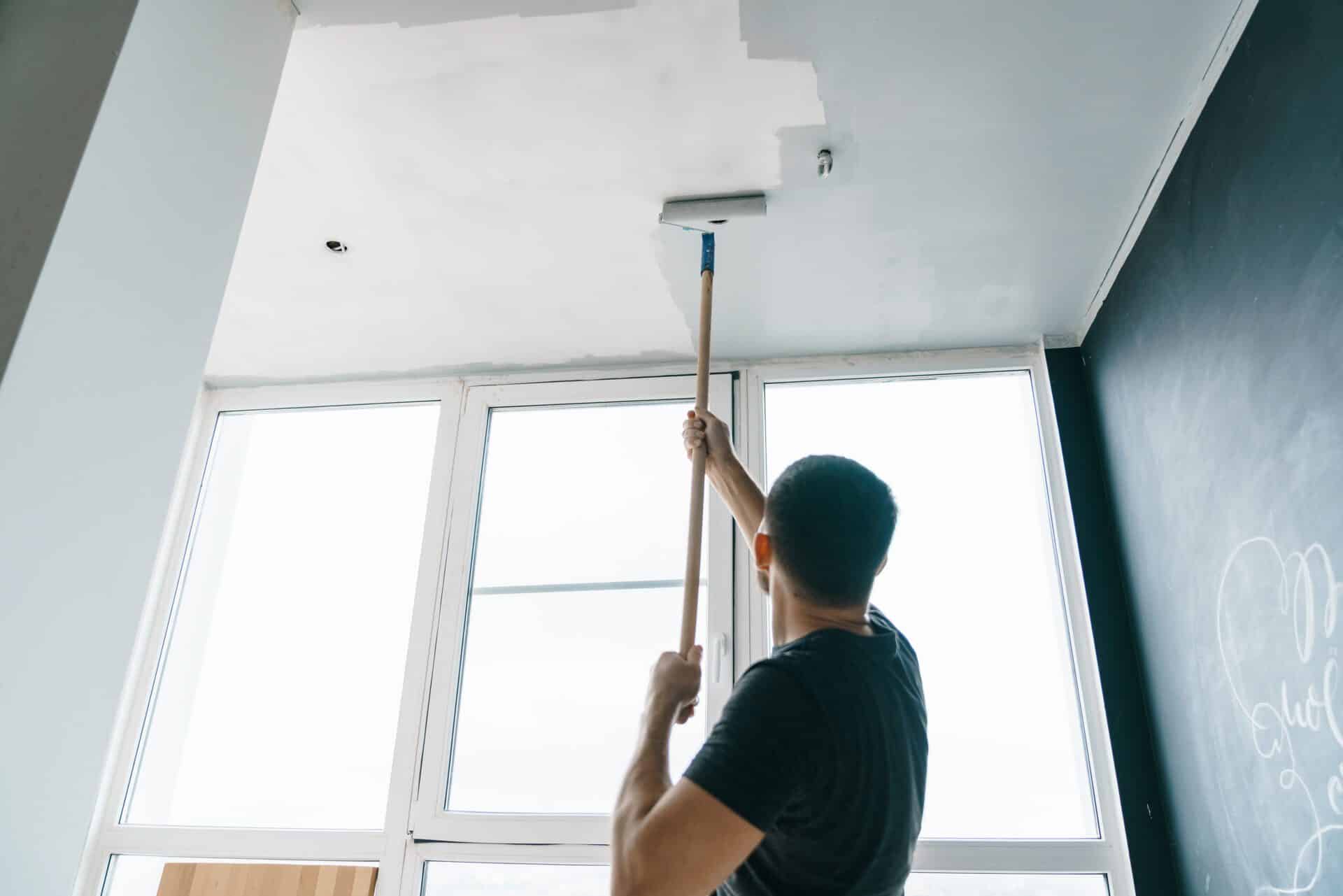
Ceiling Painting 101
Everyone knows ceilings are a tricky project to tackle for any level of painter, with complications of gravity and texture often factoring into the process. But you’d be surprised at how much a room can transform by adding a fresh coat of paint to your ceiling. Let’s learn more.
Priming and Protecting Your Area
The first step to painting your ceiling is to make sure everything in your space is protected, and your home is primed and prepped. Removing or covering valuable furniture is important, because everything will be in the “drip zone” after your paint job. An often-forgotten part of painting the ceiling is protecting your light fixtures. Use painter’s tape or wrap a lightweight drop cloth around your lights to keep them safe throughout the process.
To get the smoothest results, you should also sand it to ensure a proper paint job the first time and increase paint bonding. You can use a sanding stick, or a drywall sponge. Be sure to wear a dusk mask, even though your goal is to produce as little dust as possible.
Special Tools
Besides a taller-than-normal ladder, there are a few other tools that you’ll need to successfully paint a ceiling. Painter’s tape, an angled brush, a canvas drop cloth, a roller, something to sand the surface with before painting, and a bucket are some essentials that will need to be purchased.
Consider Color
While eggshell white or taupe is a typical color that is used, don’t be afraid to think outside of the box. Choose a darker color than the walls if you want a cozy or intimate look, choose a lighter color than the walls for an elegant and simple look, which can make the room appear higher and larger. If you are feeling bold, choose a bright color, like red or blue, and use furniture and decorations to accent it throughout the room.
Ceiling Texture is Everything
It can be nearly impossible to paint a rough textured ceiling with a “popcorn” texture, but with a thicker roller made for textured surfaces, and of course more paint. The reason more paint is needed is to get into the groves of a textured ceiling. You can also buy a paint texture additive to match the texture of the ceiling, such as fine, medium and coarse. By mixing in this additive, the paint will more easily match the texture on the ceiling. Texture can influence a lot of your ceiling painting experience.
Don’t worry about all the complications of painting your ceiling. At Arizona Painting Company, we’re out to change the home improvement industry with technology and systems that will exceed our customers’ expectations. Our residential painters go above and beyond expectations, and from touching up walls to giving homes a fresh coat of paint for ultimate curb appeal, we offer our customers the service and advice they want at the moments they need them the most. Schedule a painting quote today with Arizona Painting Company!
